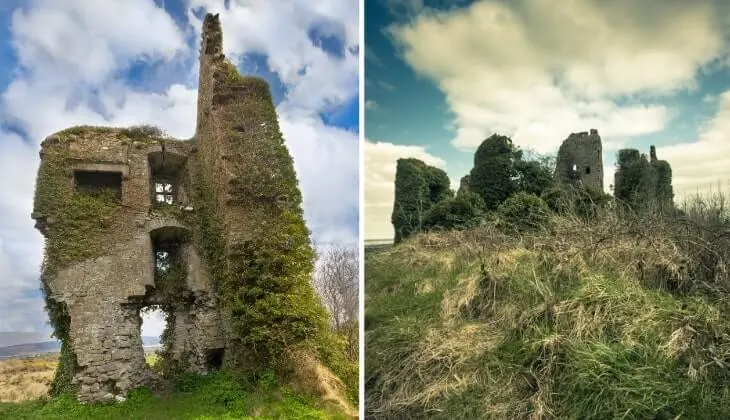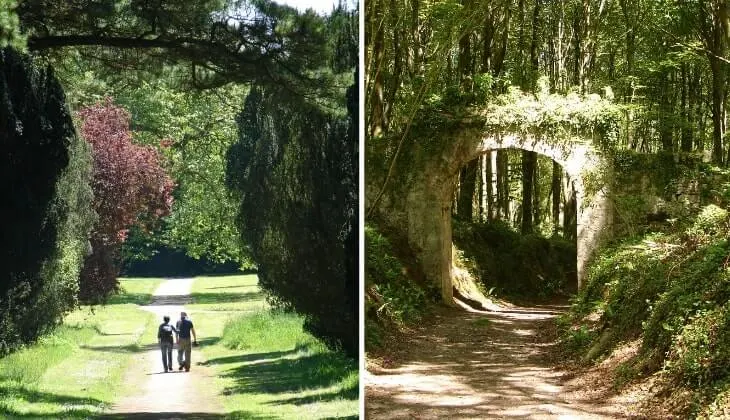When it comes to castles in Limerick, a few tend to nab all of the limelight.
The likes of King John’s Castle and Adare Castle rightly receive their fair share of international and domestic visitors.
However, there’s plenty of other medieval structures in Limerick, like the ruins of Carrigogunnell Castle, that are worth a look, as you’ll discover below!
Some quick need-to-knows about Carrigogunnell Castle

Photo via Shutterstock
Although a visit to Carrigogunnell is fairly straightforward, there are a few need-to-knows that’ll make your visit that bit more enjoyable.
1. Location
Carrigogunnell Castle can be found 3km north of Clarina Village in Limerick. It sits on a volcanic rock with superb views overlooking the Shannon Estuary. It’s a 15-minute drive from both Shannon and Adare and a 20-minute drive from Limerick City.
2. Parking
The castle unfortunately has no dedicated parking. I would recommend parking your car at nearby Ballybrown Church. It’s a 15-minute walk from there (just take care as you’ll be walking on roads with no path!).
3. Getting to the castle (warning)
Getting to the castle can be tricky. Google Maps often incorrectly brings you here but this is private property so do not enter this way. The makeshift entrance is on the other side and you enter at your own risk.
4. A fine bit of folklore
For those who love a mighty tale of good overcoming evil, Carrigogunnell means “Rock of the Candle”. It got its name, according to local folklore, as the castle was occupied by a wizened hag who lit a candle every night. Anyone who looked at the candle would die before dawn. Wearing a magic cap, the local hero Regan broke the curse.
The history of Carrigogunnell Castle

Photos via Shutterstock
As is the case with many castles in Ireland, there’s a fine bit of history attached to Carrigogunnell. Sitting on a rock and silhouetted against the skyline are the ruined remains of Carrigogunnell Castle.
There was a castle recorded here in 1209 and it’s thought that it may have been built for the Templars as they used it as a garrison.
The current building dates back to around 1450. The castle was sacked and largely destroyed in 1691 after it was captured during the second siege of Limerick. The surviving ruins include parts of the upper bailey and west wall.
Built as a fortified house
Carrigogunnell Castle was probably constructed by the Gaelic Dalcassian people as a fortified house rather than a fortress. The southern gateway was poorly defended with walls that were insubstantial in the case of a siege, and the complex lacked the usual watchtowers.
The castle ward covered approximately one acre. The building was constructed of well-cut imported limestone, not the local rock on which it stands.
Ownership over the years
Early ownership of Carrigogunnell Castle includes the O’Brien clan and later the O’Connells who surrendered it to the Fitzgeralds.
In the 17th century it was used as stables by a Captain Wilson, after passing through the hands of Donough Brien and Michael Boyle (later Archbishop of Dublin). At that time it included a castle, barn and salmon fishery.
What’s left of the castle
By 1908, most of the west wall had been lost and only the outer wall and remnants of the south wall remained, along with 14th and 15th century foundations.
The two-storey building that occupied the NE corner of the ward was probably a chapel. Other architectural remains show the castle had a 50-foot-high keep in the NW corner with a 5-storey spiral staircase.
Next to it was a 3-storey residence, a south tower and staircase. Look for the small dungeon-like cell entered by a hole in the roof. Was it a “hanging hole” or just part of the drainage system?
During the second siege of Limerick (1689-91) the castle was occupied by 150 men loyal to King James II.
Things to do near Carrigogunnell Castle
One of the beauties of this place is that it’s a short spin away from many of the best things to do in Limerick.
Below, you’ll find a handful of things to see and do a stone’s throw from Carrigogunnell!
1. Curraghchase Forest Park (15-minute drive)

Photos via Shutterstock
Head to Curraghchase Forest Park for a wander in 313 hectares of woodland, park and lakes. There are various waymarked trails suitable for all visitors including wheelchair users and pushchairs. Admission (barrier gated entrance) is €5. The park closes at 9pm in summer and 6.30pm in winter.
2. Adare (15-minute drive)

Photos via Shutterstock
Adare is a quintessential Irish village with thatched cottages, restaurants, cafes and galleries dating back to the 13th century. Known as “Ireland’s Prettiest Village”, it boasts three historic churches and a Heritage Centre on the Main Street. Don’t miss the low multi-arch bridge, the Old Friary, Craft Market, Desmond Castle and the Courthouse.
3. Limerick City (20-minute drive)

Photos via Shutterstock
There’s loads to do in Limerick City, the seat of this southwest county. The mediaeval old town has Georgian townhouses around St John’s Square, a remarkable cathedral and 13th century King John’s Castle on the Shannon River.
FAQs about visiting Carrigogunnell
We’ve had a lot of questions over the years asking about everything from ‘Is there a guided tour?’ to ‘When was it built?’.
In the section below, we’ve popped in the most FAQs that we’ve received. If you have a question that we haven’t tackled, ask away in the comments section below.
Is Carrigogunnell Castle worth visiting?
If you’ve visited Desmond Castle and King John’s and you’re hankering for more, then yes. But take the warnings mentioned above into account.
How do you get to Carrigogunnell?
You need to go up a narrow road on the south side of the castle. Note that you need to ensure you avoid trespassing.
